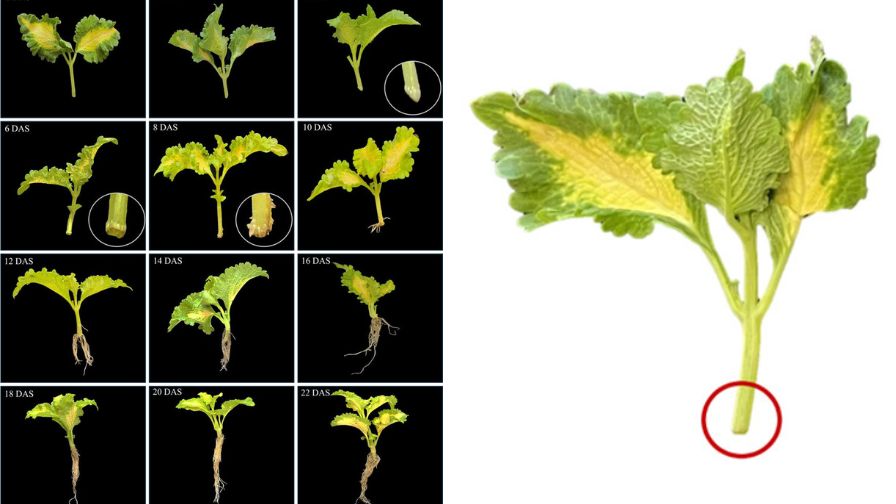
Visual of days after sticking development (L) and new carbohydrate sink location (R) | e-Gro Alerts, HortScience
Many greenhouse and nursery plants are propagated through the practice of “shoot-tip cuttings taken from stock plants and planted to develop adventitious roots,” also commonly known as rooting. Therefore, the success of rooting is paramount to the development of high-quality and healthy plants.
However, even among ideal environmental conditions, the success rate of rooting is often dependent on the location and concentration of carbohydrates within the cuttings. These carbohydrates are reallocated upon “the disruption of nutrient supply from the mother plant,” moving to the “root regeneration zone.” In turn, this affects the “sink strength” of nutrients to cuttings and plugs.
This has led Assistant Professor Rosa Raudales and Post-Doctoral Research Associate Mayra Toro-Herrera of the Department of Plant Science and Landscape Architecture at the University of Connecticut (UCONN) to test the feasibility of sugar translocator products and gauge their impact on the quality of rooted cuttings, in a recent e-Gro alert.
What Is a Sugar Translocator?
Essentially, sugar translocator products are gene-encoded proteins that help to move sugars (and therefore carbohydrates) throughout a plant.
A Sugar Translocator Experiment on Coleus Cuttings
For their experiment, the pair tested the Sugar Mover Premier on coleus cuttings, applying the product through sprays during the following processes:
- Sticking
- Callus formation
- Root development
- Toning phases
The cuttings were then compared to plants grown under the same conditions but without the application of a sugar translocator product.
The Health of the Cuttings After Sugar Translocator Applications
During sticking, the application of the sugar translocator caused “some phytotoxicity symptoms,” and showed stunted growth compared to untreated plants.
During callus formation, the application of the sugar translocator caused “sub-optimal plug quality,” with elongated shoots that produced fewer leaves and roots.
During root development, the application of the sugar translocator caused the development of long shoots and roots, and “total dry matter” compared to all other treatments.
During the toning phases, the application of the sugar translocator did not have any observable impacts.
For more information regarding the experiment and effects of sugar translocators on cutting root development, please read the full e-Gro (Electronic Grower Resources Online) alert “‘Sugar Translocators’ – A Fad Diet or a True Program for Rooting?” Additional and current e-Gro alert pieces from Volume 13 (2024) can be found online.

